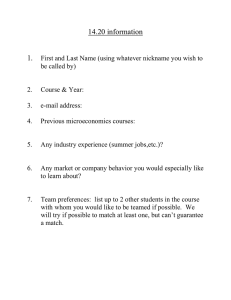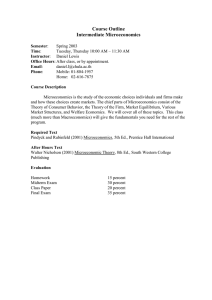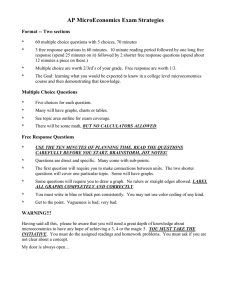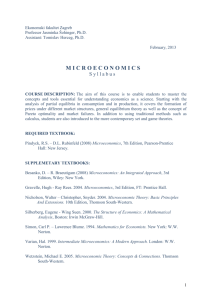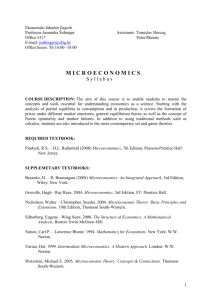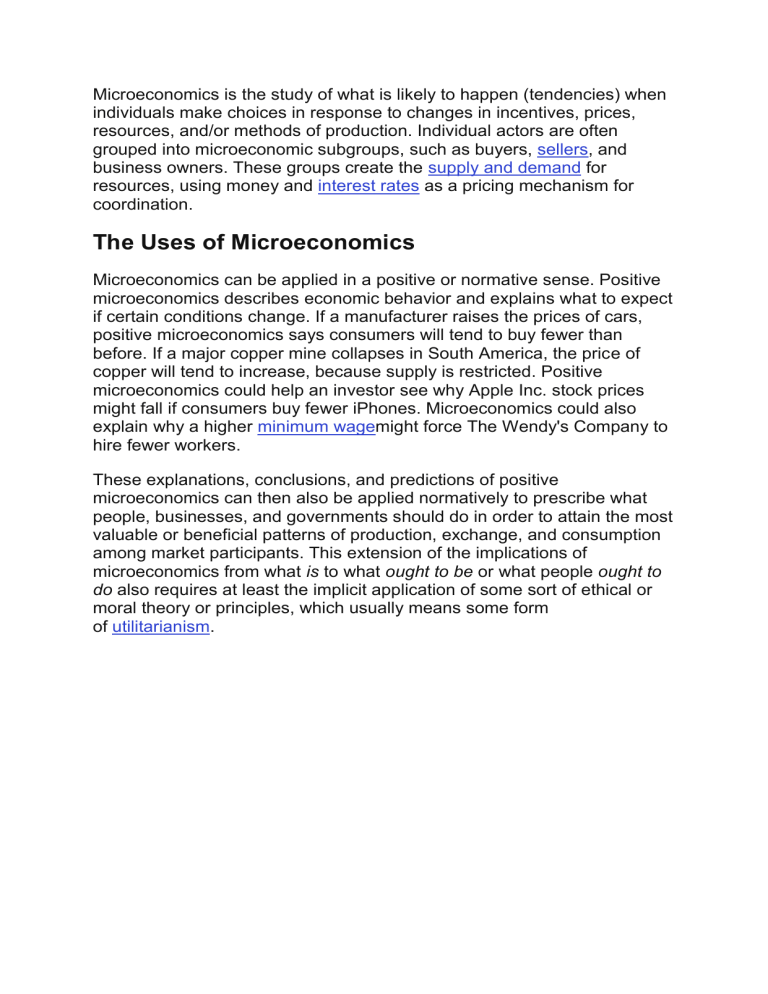
Microeconomics is the study of what is likely to happen (tendencies) when individuals make choices in response to changes in incentives, prices, resources, and/or methods of production. Individual actors are often grouped into microeconomic subgroups, such as buyers, sellers, and business owners. These groups create the supply and demand for resources, using money and interest rates as a pricing mechanism for coordination. The Uses of Microeconomics Microeconomics can be applied in a positive or normative sense. Positive microeconomics describes economic behavior and explains what to expect if certain conditions change. If a manufacturer raises the prices of cars, positive microeconomics says consumers will tend to buy fewer than before. If a major copper mine collapses in South America, the price of copper will tend to increase, because supply is restricted. Positive microeconomics could help an investor see why Apple Inc. stock prices might fall if consumers buy fewer iPhones. Microeconomics could also explain why a higher minimum wagemight force The Wendy's Company to hire fewer workers. These explanations, conclusions, and predictions of positive microeconomics can then also be applied normatively to prescribe what people, businesses, and governments should do in order to attain the most valuable or beneficial patterns of production, exchange, and consumption among market participants. This extension of the implications of microeconomics from what is to what ought to be or what people ought to do also requires at least the implicit application of some sort of ethical or moral theory or principles, which usually means some form of utilitarianism.
